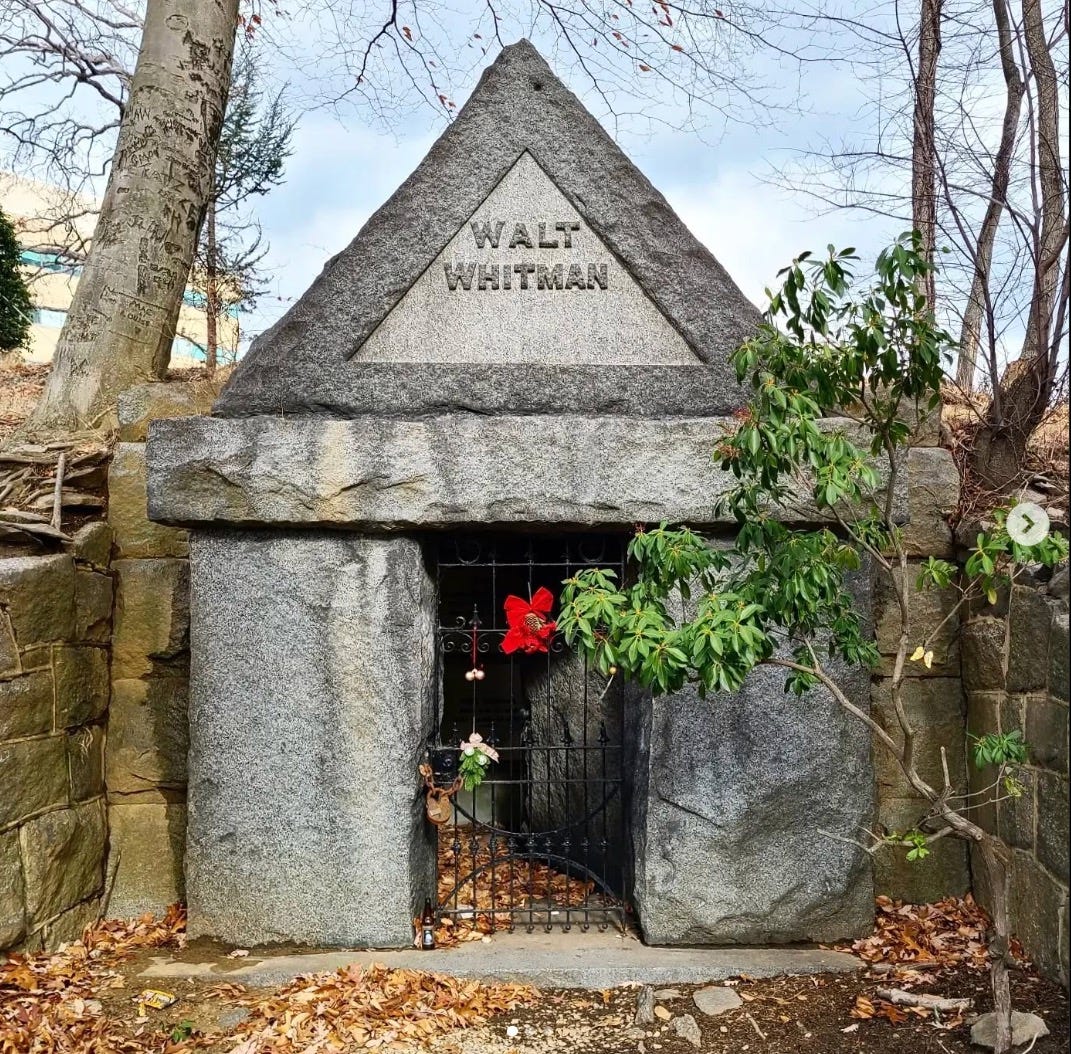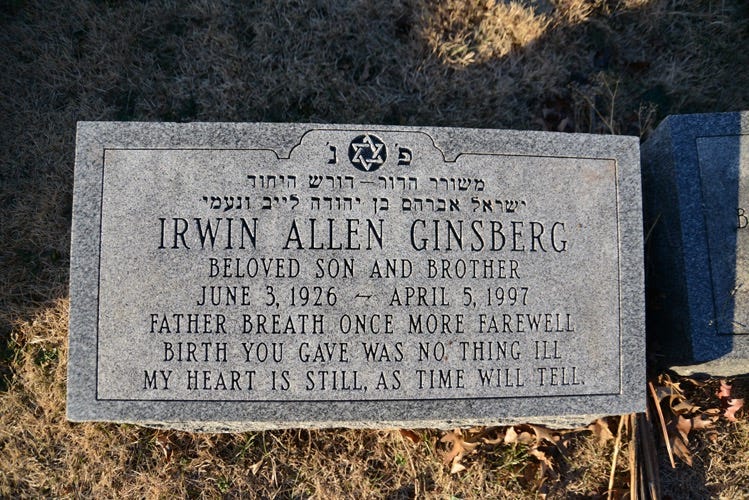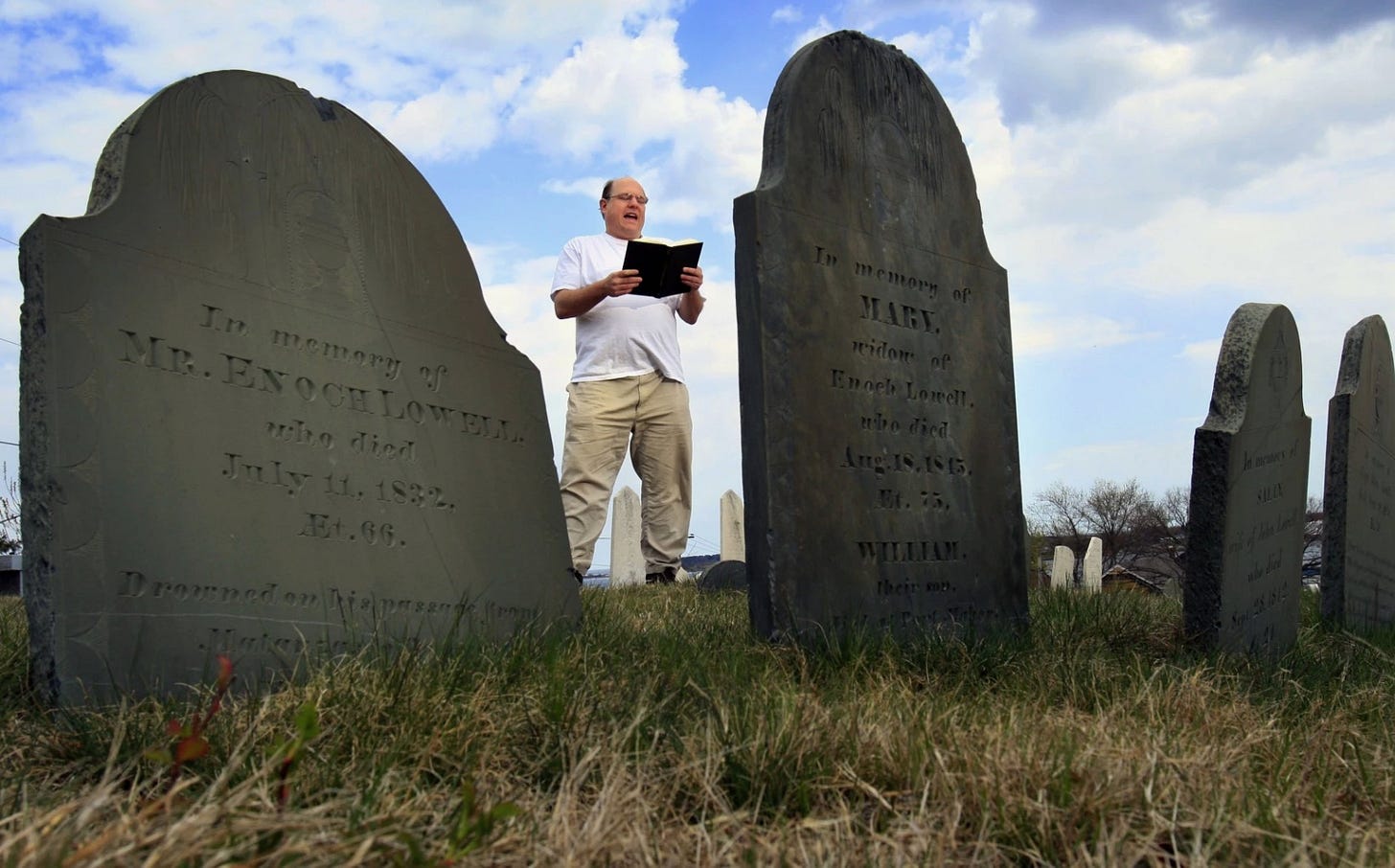For a long time, I have been drawn to where they lived—where they worked, drank their coffee, tea, or their booze. I’ve lived in Jack Kerouac’s Orlando home as a writer-in-residence. I’ve visit Hemingway’s home in Key West and Cuba. I’ve been to Sloppy Joe’s in Florida, the La Floridita in Havana, and the Ritz in Paris. I’ve been to the home in Howth, Ireland where Yeats lived as a teenager. Oscar Wilde’s house in Dublin. Dylan Thomas’ home and writing shed in Wales.
But it wasn’t until I visited Thomas’ grave in Laugharne, that the strange energy of the dead poet emerged. There had been inklings of this odd yet transcendent sensation many years ago on my first visit to Westminster Abbey and Poet’s Corner. Many famous poets are buried or commemorated in this area located in the south transept. It houses the graves and monuments of numerous writers, including Geoffrey Chaucer, Rudyard Kipling, and Robert Browning. It is impossible not to experience some magical emotional shift when standing in Poet’s Corner.
A few years ago, not long after the release of the movie “Dead Poets Society,” a man named William Skold from Freeport, Maine set out in his graffiti-covered van dubbed the “Poemobile” to visit the graves of poets. For years, Skold found himself at the gravesites of more than 500 American poets, some of whom had fallen into obscurity. In an interview with New Hampshire Public Radio a decade ago, Skold was quoted as saying, "There's a whole long tradition in Western poetry of poets visiting poets’ graves. So, I'd been reading a lot of those poems. And it's like, what's the deal? Why are all these poets visiting other poet's graves?"
Good questions.
In a post at the website of the American Academy of Poets, there was an attempt at some answers.
“For those who visit gravesites of poets they admire, however, it is not about the grandeur of the spot, but about communing with the individuals.”
And somehow for poets, visiting the dead seems more fitting.
I know that was the case for me when I came over the bridge and the hill in Wales were Dylan Thomas’ resting place is marked by a simple white cross. This is from a piece I wrote entitled “Leaving Laugharne” —
“From where he’d been there was a tall gate, the name St. Martin’s welded in the iron. And on the other side, a hillside where newer graves lined the steep grade in neat rows. Above this, another hill, and among the dozens of stone and granite markers was a single white cross. I walked slowly, being careful not to step on the graves, and found myself before mounded ground where someone had placed seashells in the form of a cross and had left purple foxglove as a gift. I stood silent, reading the marker and lifting my eyes up to the town below. Dylan had died young, but here behind the cover of clouds and a view of Laugharne, he was as old as the hills and the sea. And what he had given us and me was forever.”
And so, the fascination began.
Where to find the graves of the poets? Everywhere. Although there are many in France and in the New England states.
Père Lachaise Cemetery in Paris is the world’s most visited. And you can mostly attribute this to the dead poets there. Not only is the rock-and-roll poet, Jim Morrison buried there, but it is also the final resting place of Oscar Wilde, Molière, and Charles Baudelaire.
America’s Northeast also claims many a poet’s grave.
Ralph Waldo Emerson’s plot in Sleepy Hollow Cemetery in Concord, Massachusetts, is marked by a large boulder. Walt Whitman’s tomb in Harleigh Cemetery in Camden, New Jersey, is rustic, yet lush with greenery. Jack Kerouac is buried in Lowell, Massachusetts, Stanley Kunitz is in Provincetown Cemetery in Provincetown, Henry Wadsworth Longfellow is buried in Mount Auburn Cemetery in Cambridge as is Amy Lowell. Anne Sexton’s remains are in Forest Hills Cemetery in Boston. Many of these graves are found in the poet’s hometown or where they produced much of their work.
Still, many others have chosen places of spiritual meaning or where they had last traveled far from their homeland.
The remains of Englishman D. H. Lawrence were cremated, his ashes mixed in with cement to build an altar at his ranch outside Taos, New Mexico.
Sylvia Plath’s grave in Yorkshire, England, is unkempt, although tulips are often left for her. E. E. Cummings’ burial site has little more than a ground marker next to his wife's family stone. The village of Drumcliffe, County Sligo is the final resting place of W.B. Yeats, whose grave is in the churchyard under a simple headstone.
Rainer Maria Rilke is buried in a Raron, Switzerland churchyard. The simple headstone is surrounded by a short-walled rose garden, as the popular myth exists that Rilke pricked his finger on a rose and through that small wound, contracted an incurable infection that would eventually lead to his death.
Percy Bysshe Shelley and John Keats are interred at the Protestant Cemetery in Rome’s Testaccio quarter.
The fascination with dead poets is many-fold. Of course, for those who died young, it’s the arrested creative life, the troubled soul that carries the weight. Plus, the poet, no matter the age or cause of death, remains a romanticized figure, carrying a sense of tragedy, melancholia, and mortality.
There is no rule to visiting the graves of dead poets. But two significant dates do come to mind. April 23rd is Dead Poets Day, marking the death anniversary of a number of poets. Yes, all on the same date. William Shakespeare, Miguel de Cervantes, Rupert Brooke, William Wordsworth, Henry Vaughan, Thomas Tickell, and Peter Porter all died on April 23rd. And on October 7th, it’s Dead Poets Remembrance Day, the day Edgar Allan Poe passed away. The Poetry Foundation says the day is a “combination of All-Saints Day, the Day of the Dead, and Halloween, when graveyards are filled with both saints and revelers.”
Death also can be an odd awakening for a poet’s work. Emily Dickinson, who published only seven poems in her lifetime, became revered after she died. Not long after her death in 1886, her sister uncovered almost a thousand of Dickinson's poems bound with thread in numerous booklets. The rest is poetic history.
William Skold—the man behind the idea for the Poemobile, the day of remembrance, and a poet himself—died several years ago while still on his quest to document the graves of hundreds of published American poets, many incredibly obscure. Skold suffered a fatal heart attack a few weeks after commissioning his own tombstone. He had asked the son of novelist John Updike to carve his tombstone topped with a dancing skeleton and a quill. The grave is in Elkins Park, PA, outside Philadelphia. A year afterward, Skold became a published poet himself. Two of his children curated their father's poems and published the collection—The Mirror is Not Cracked.
And how wonderfully poetic is that?
David W. Berner is the author of several books of award-winning fiction and memoir. His latest, Daylight Saving Time: The power of growing older is available now. His debut poetry collection, Garden Tools is due out in October 2025 from Finishing Line Press. His novella, American Moon will be published by Regal House Publishing in 2026.









I remember being awed by Oscar Wilde’s gravesite on Père Lachaise. It’s massive. In 2011, his descendants cleaned the tomb of the many lipstick marks left there by admirers, and a glass barrier was installed to prevent further marks or damage. That didn’t seem to stop admirers, because one of them climbed an adjacent monument to get closer, and caused it to crumble. Can you imagine?! Also Balzac and Gertrude Stein are there. I left my poetry chapbook “Dear Jim” at Morrison’s grave.
Patti Smith was one of the first people I'd heard of who visits the graves of famous people. It's strangely moving though. We visited May Sarton (I brought a beautiful rock with me to leave there) and also Robert Frost, a few years back. Your own pics and list remain very impressive.